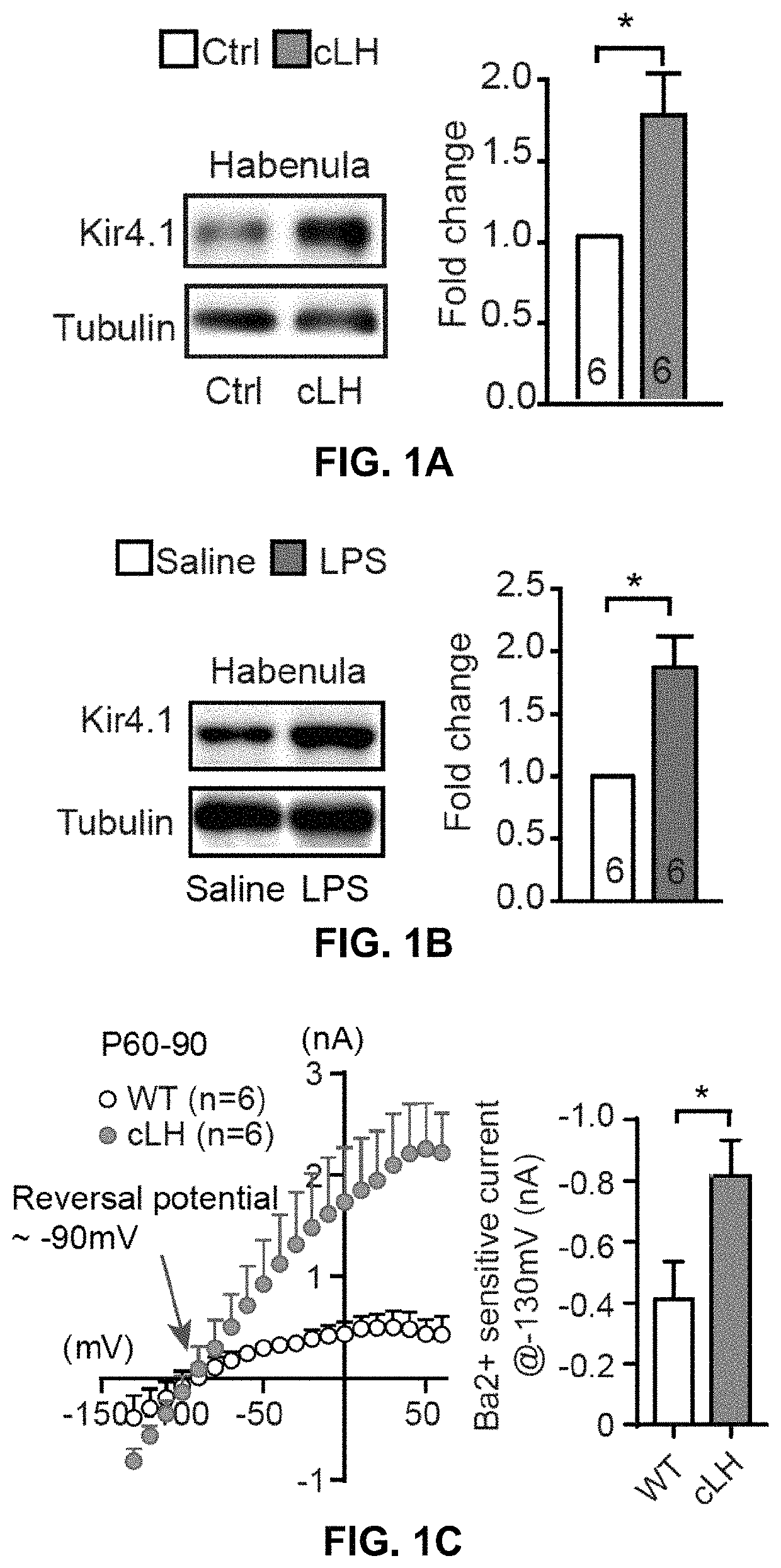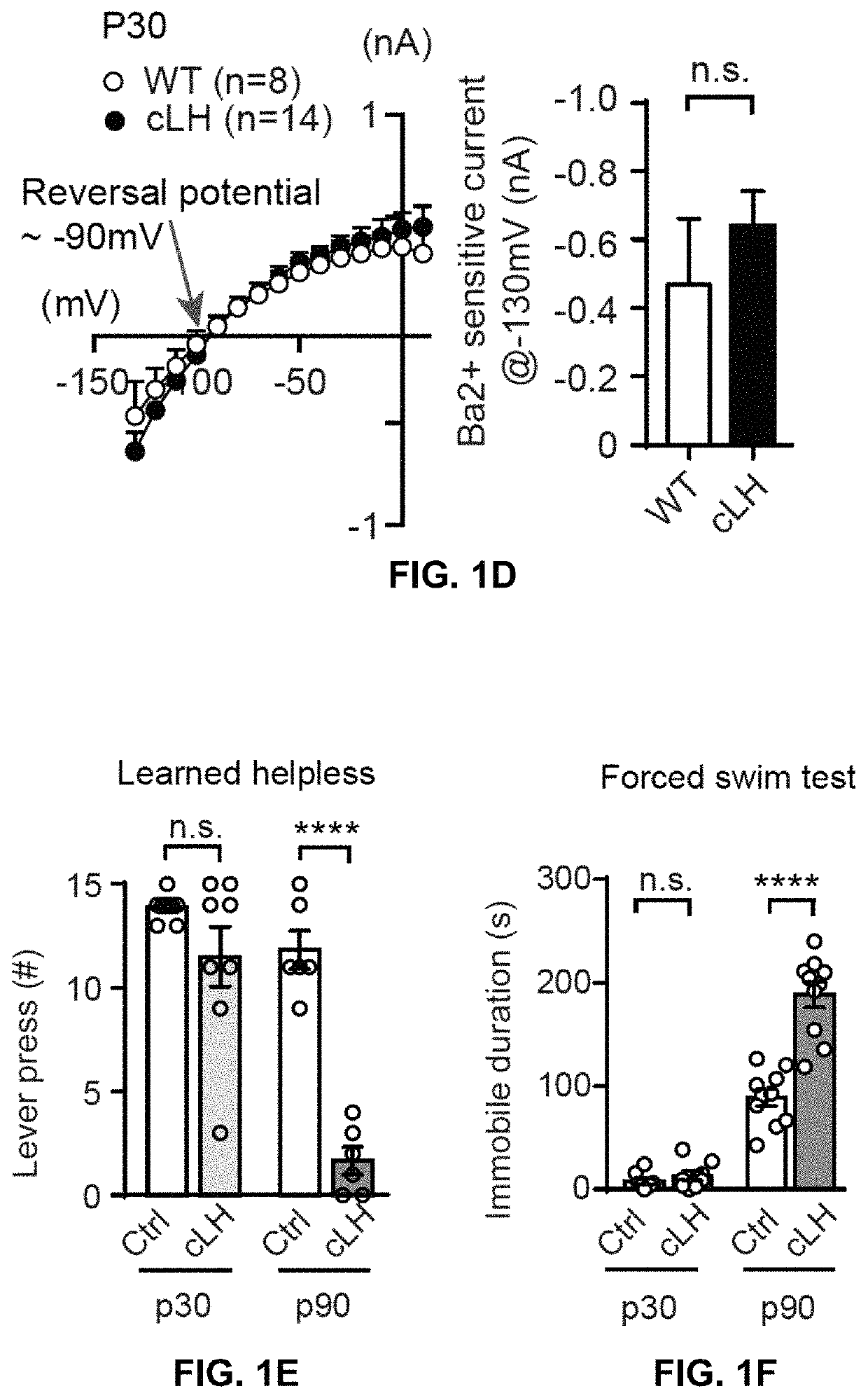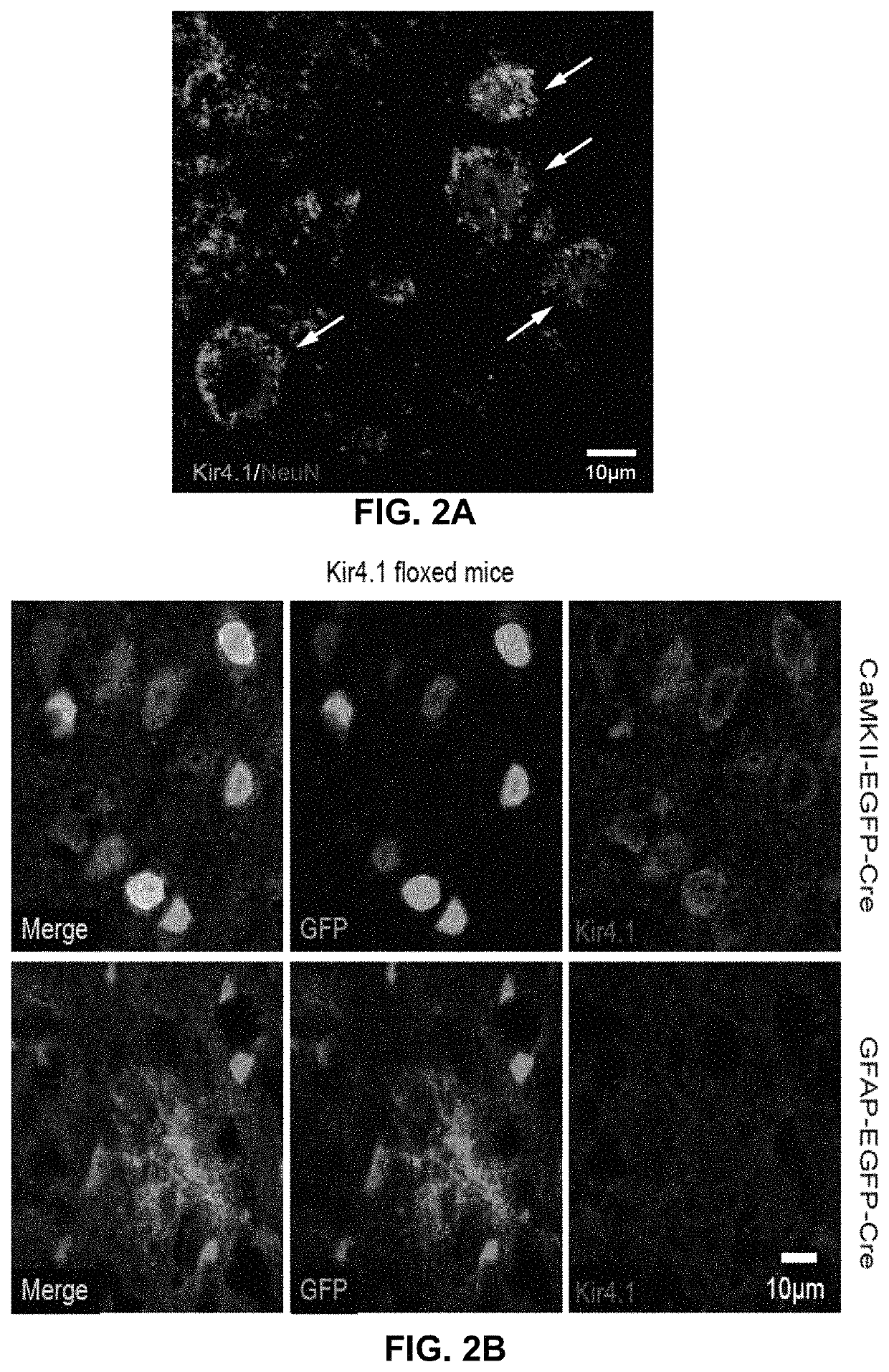Use of potassium channel inhibitor for treating depression
a potassium channel inhibitor and depression technology, applied in the field of disease therapy and pharmacy, can solve the problems of over-hyperactivity of the lateral habenula and affect the phenotype of depression
- Summary
- Abstract
- Description
- Claims
- Application Information
AI Technical Summary
Benefits of technology
Problems solved by technology
Method used
Image
Examples
example 1
and Methods
[0092]Animals. Male Wistar rats (12 weeks) and Sprague Dawley rats (3-4 weeks or 12 weeks) were purchased from Shanghai SLAC Laboratory Animal Co. The cLH rats were introduced from Malinow's lab in Cold Spring Harbor of USA, and screened by learned helpless test for breeding as previously described (Schulz et al., 2010). Male cLH rats (3-4 weeks or 12 weeks) were used. Male adult (7-8 weeks of age) C57BL / 6 mice (SLAC) were used for virus injection experiments. Animals were group-housed two / cage for rats and four / cage for mice under a 12-h light-dark cycle (light on from 7 a.m. to 7 p.m.). Animals were housed in stable conditions with food and water ad libitum. All animal studies and experimental procedures were approved by the Animal Care and Use Committee of the animal facility at Zhejiang University.
[0093]Virus and Plasmid Construct.
[0094]For knock-out tests, AAV5-gfaABC1D-GFP-CreMut (titer: 4.74×1012 v.g. / ml) was ordered and prepared by Taitool Bioscience of China. AAV...
example 2
Upregulated in LHb of Animal Models of Depression
[0117]Western blot analysis confirmed that Kir4.1 had a significant increase (1.75-fold) in the membrane protein extraction of cLH habenulae (FIG. 1A). To test whether Kir4.1 upregulation is universal in depression, an additional depression animal model, the LPS (lipopolysaccharide)-induced depression was used. One week of LPS injection (0.5 mg / kg, i.p.) in 3-month-old Wistar rats was sufficient to cause strong depressive-like phenotype in the forced swim test (FST). The Kir4.1 level was also significantly increased in the LPS-depression rats (FIG. 1B, 1.87-fold).
[0118]Kir4.1 is a principal component of the glial Kir channel and is largely responsible for mediating the K+ conductance and setting the RMP of astrocytes. To confirm that Kir4.1 function is indeed upregulated, whole-cell patch clamp was performed onto the astrocytes in brain slices made from the LHb of cLH or SD rats. Astrocytes were distinguished from neurons by their sma...
example 3
e Expressed on Astrocytic Processes Tightly Wrapping Around Neuronal Soma
[0119]As an inwardly rectifying K+ channel, Kir4.1 has been strongly implicated in buffering excess extracellular K+ in tripartite synapses. Conventional model of K+ buffering suggests Kir4.1 to be highly expressed in astrocytic endfeet surrounding synapses. Surprisingly, with immunohistochemistry co-labeling, Kir4.1 staining in LHb appeared to overlap with the neuronal marker NeuN at low magnification (20×, FIG. 3A), although in the same brain slice Kir4.1 staining patterns in hippocampus were typical astrocytic-looking (FIG. 3B). However, higher magnification imaging with single layer scanning (0.76 μm per layer) revealed that Kir4.1 staining enveloped NeuN signals (FIG. 2A). To confirm that Kir4.1 indeed locates within astrocytes but not neurons in LHb, kir4.1 was separately knocked out in either neurons or astrocytes by injecting AAV virus expressing the cre recombinase under either the neuronal promoter Ca...
PUM
| Property | Measurement | Unit |
|---|---|---|
| pH | aaaaa | aaaaa |
| resistance | aaaaa | aaaaa |
| diameter | aaaaa | aaaaa |
Abstract
Description
Claims
Application Information
 Login to View More
Login to View More - R&D
- Intellectual Property
- Life Sciences
- Materials
- Tech Scout
- Unparalleled Data Quality
- Higher Quality Content
- 60% Fewer Hallucinations
Browse by: Latest US Patents, China's latest patents, Technical Efficacy Thesaurus, Application Domain, Technology Topic, Popular Technical Reports.
© 2025 PatSnap. All rights reserved.Legal|Privacy policy|Modern Slavery Act Transparency Statement|Sitemap|About US| Contact US: help@patsnap.com



